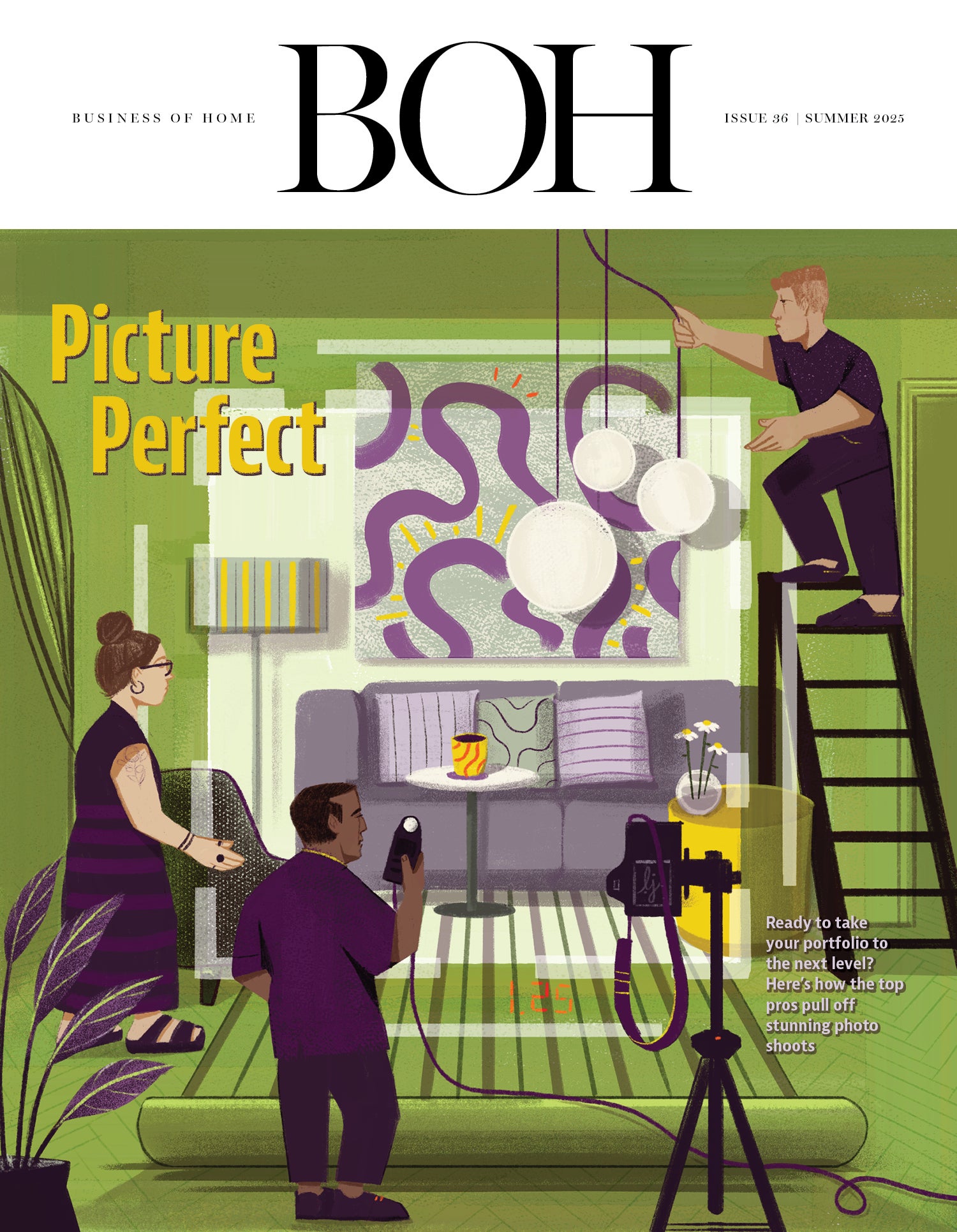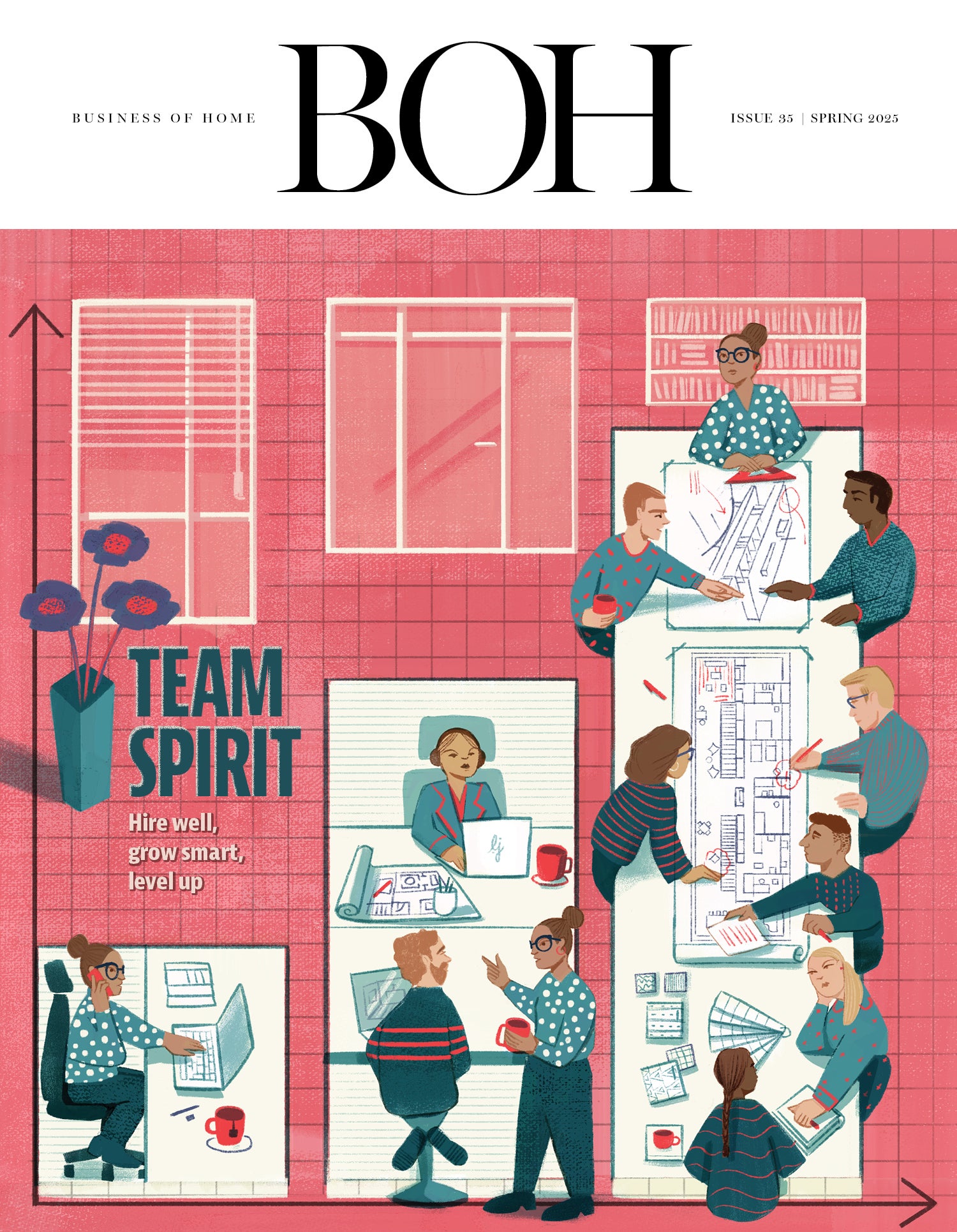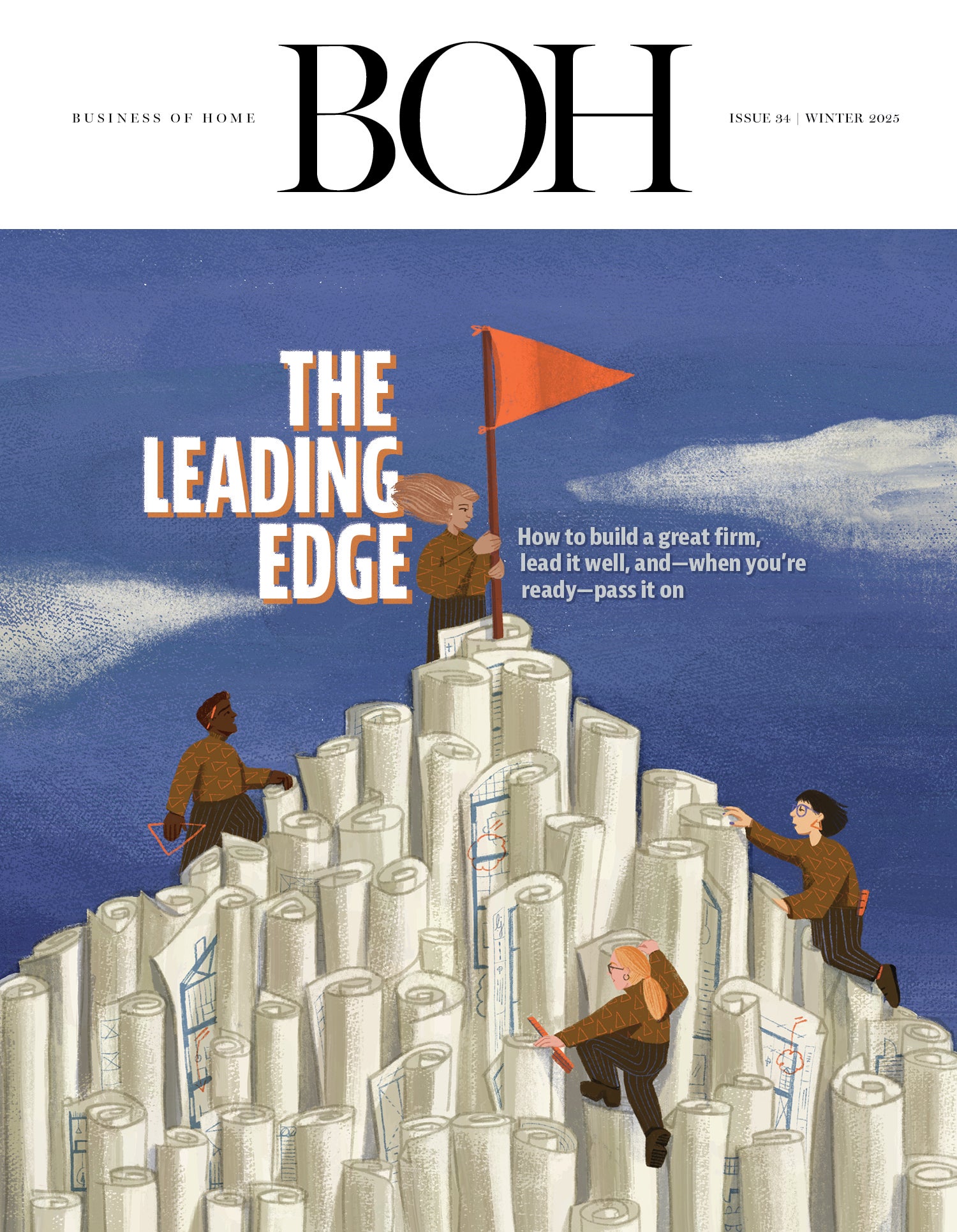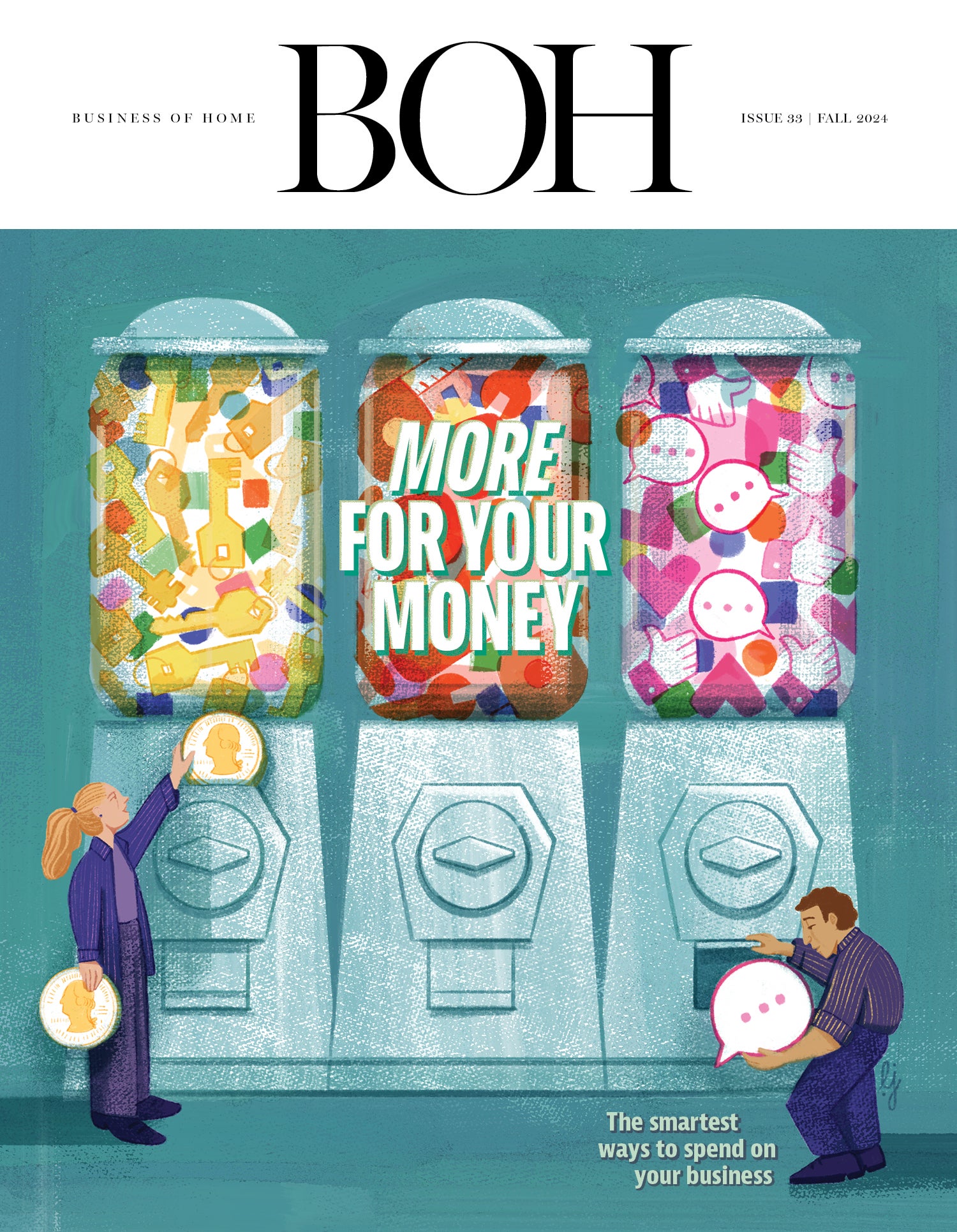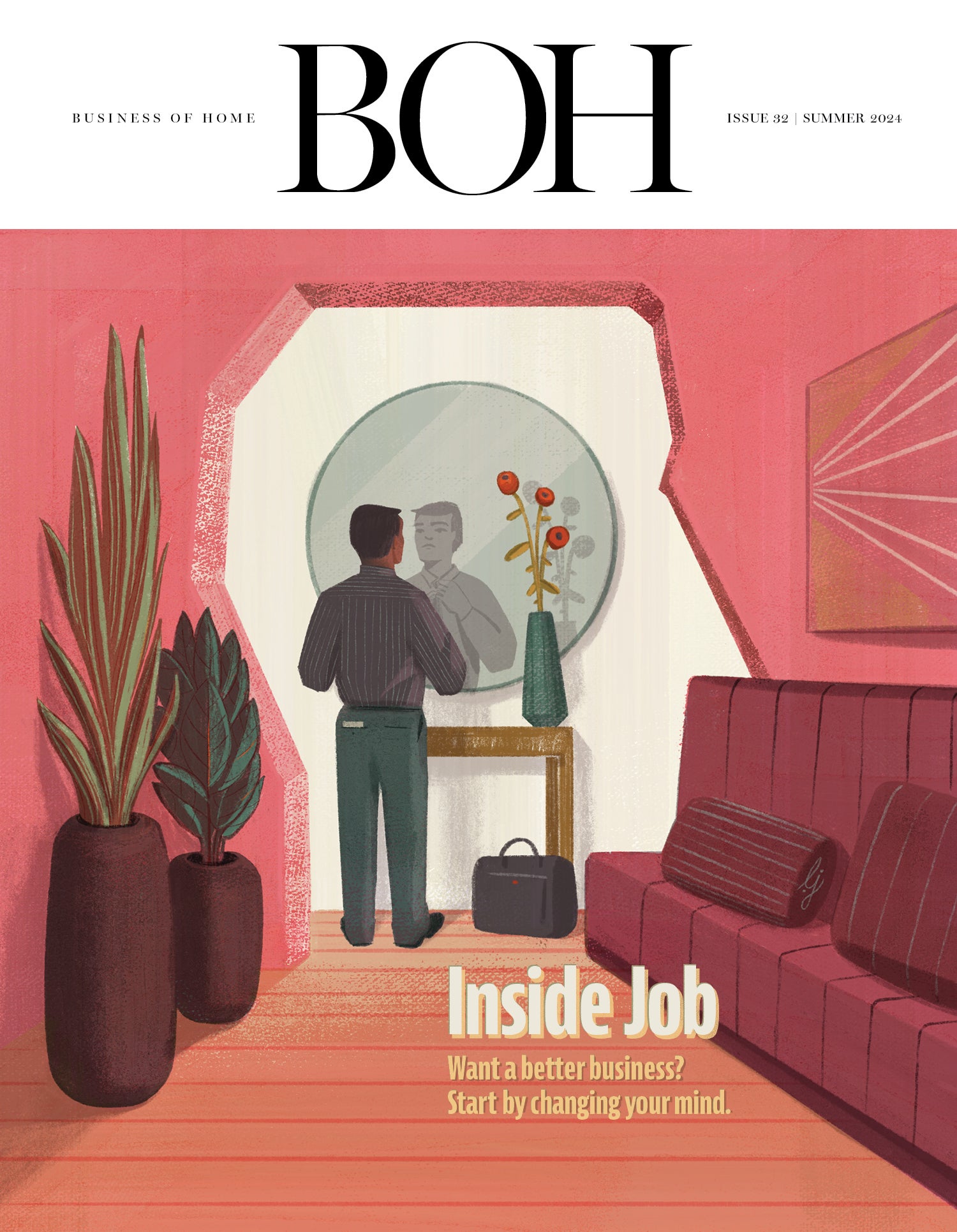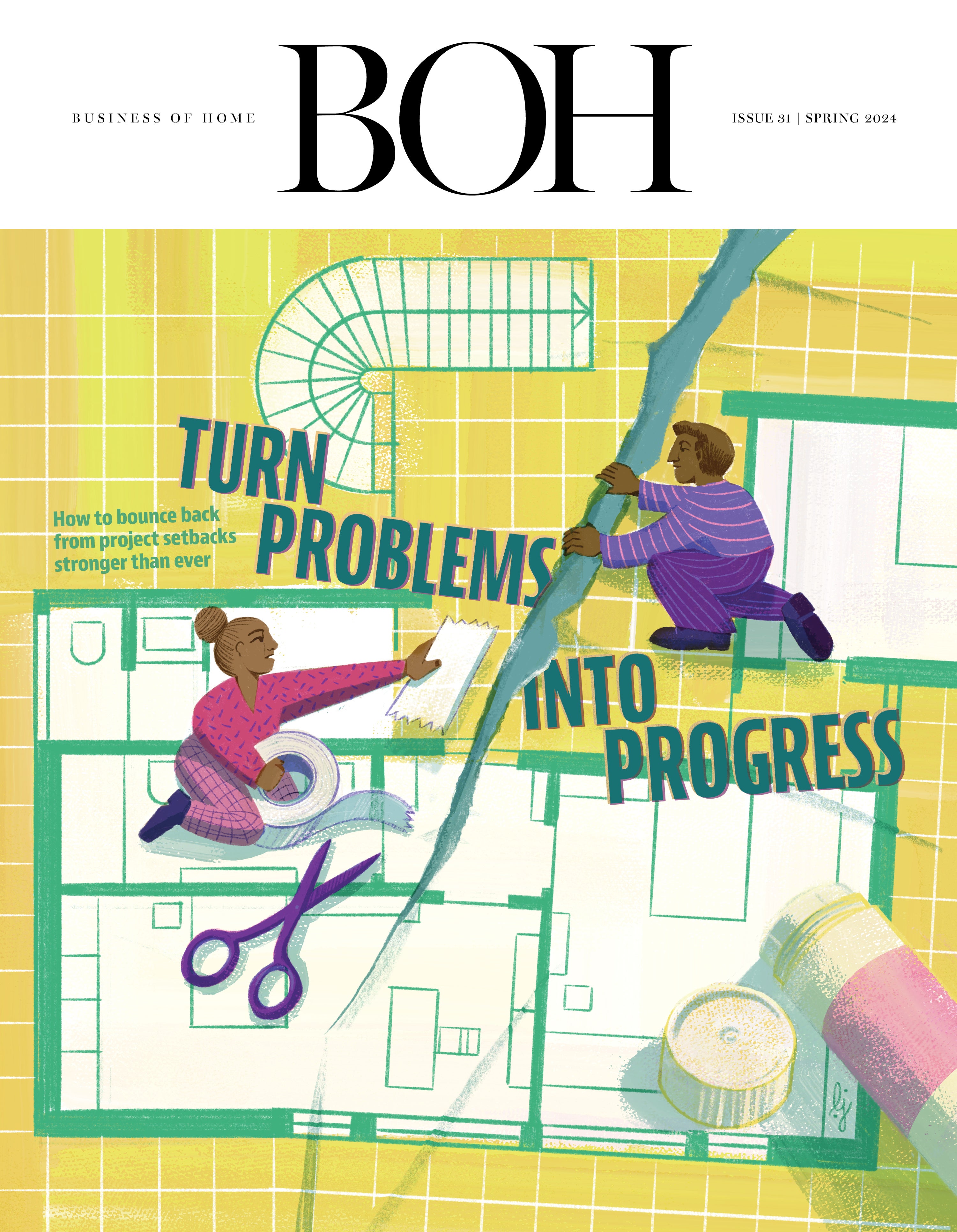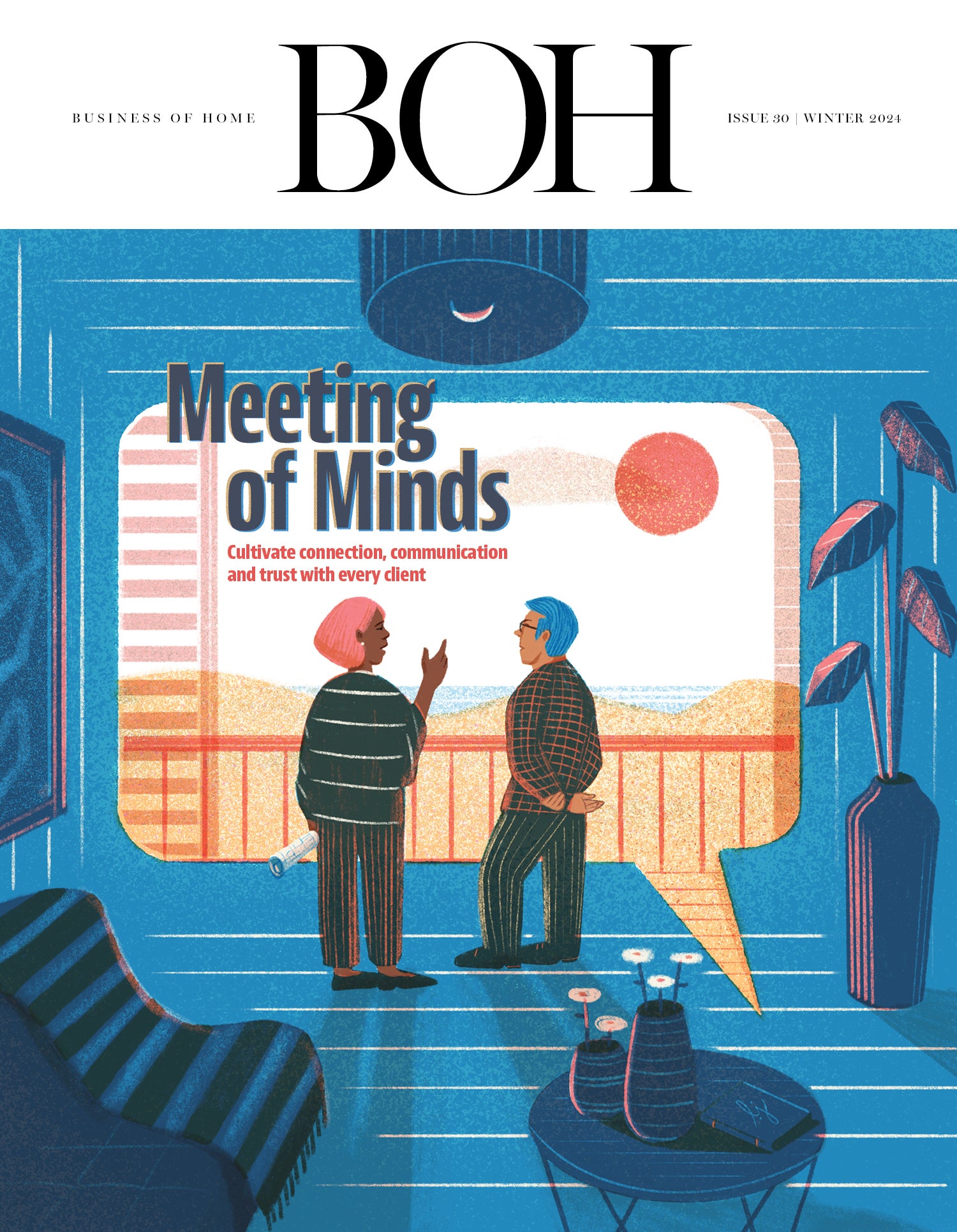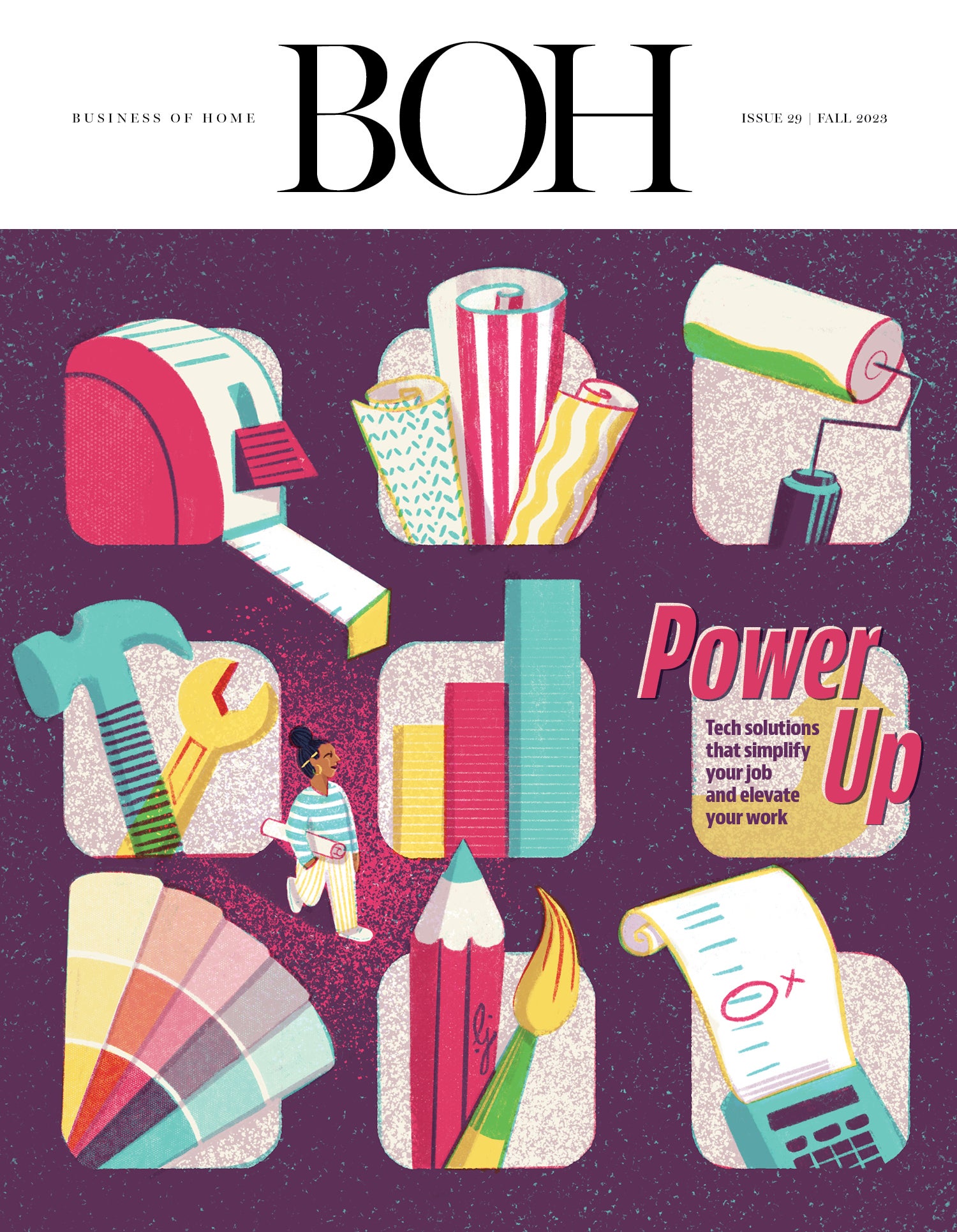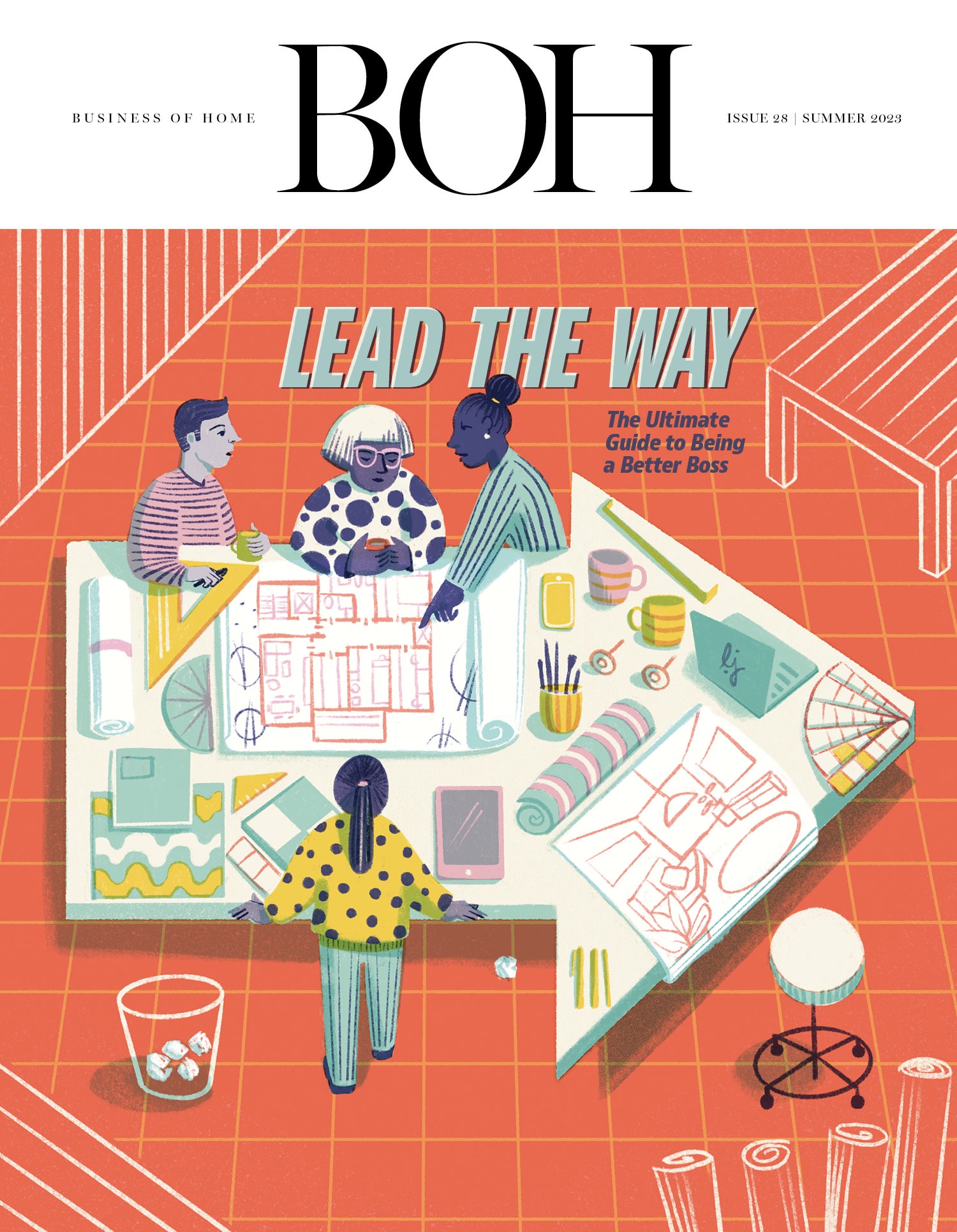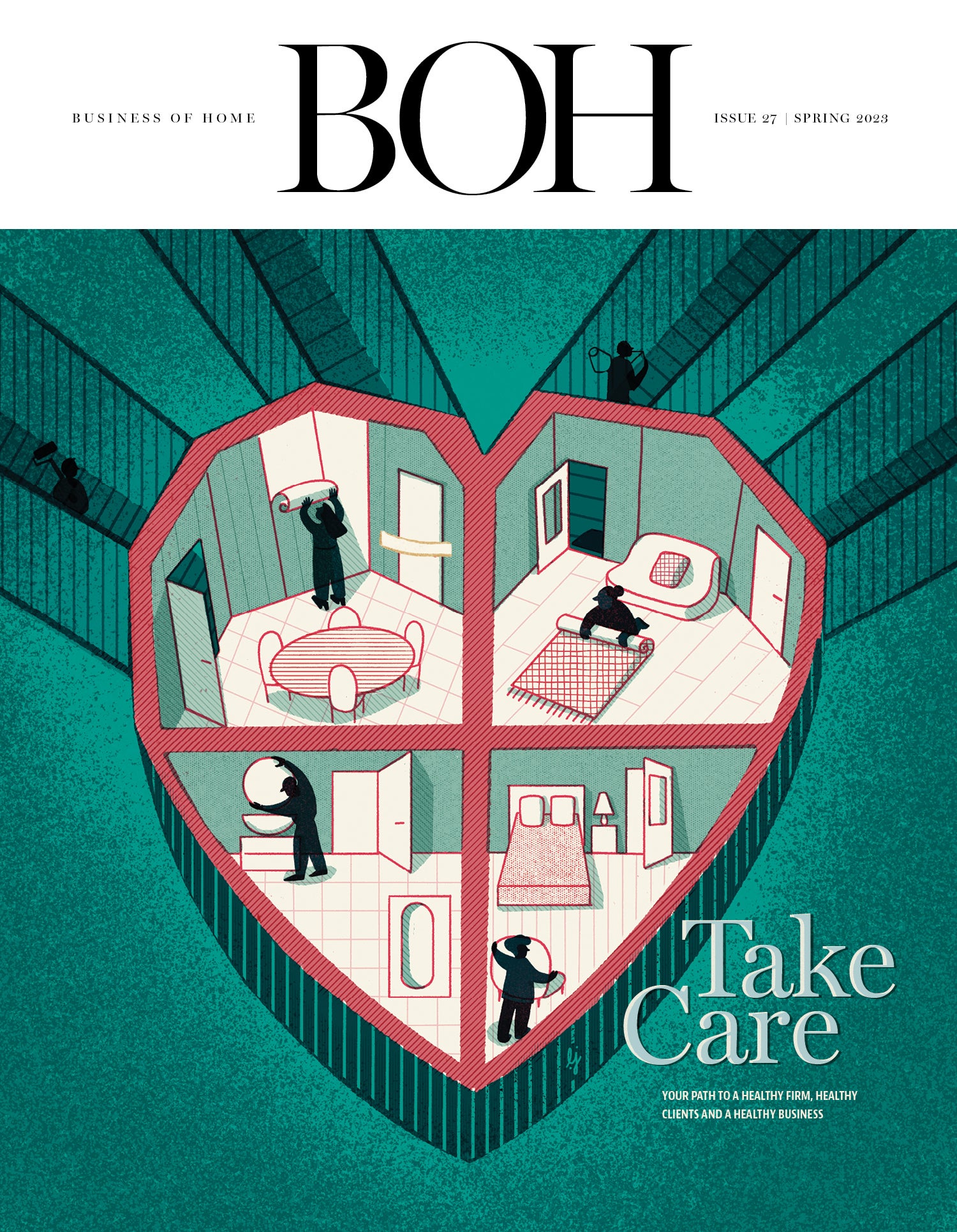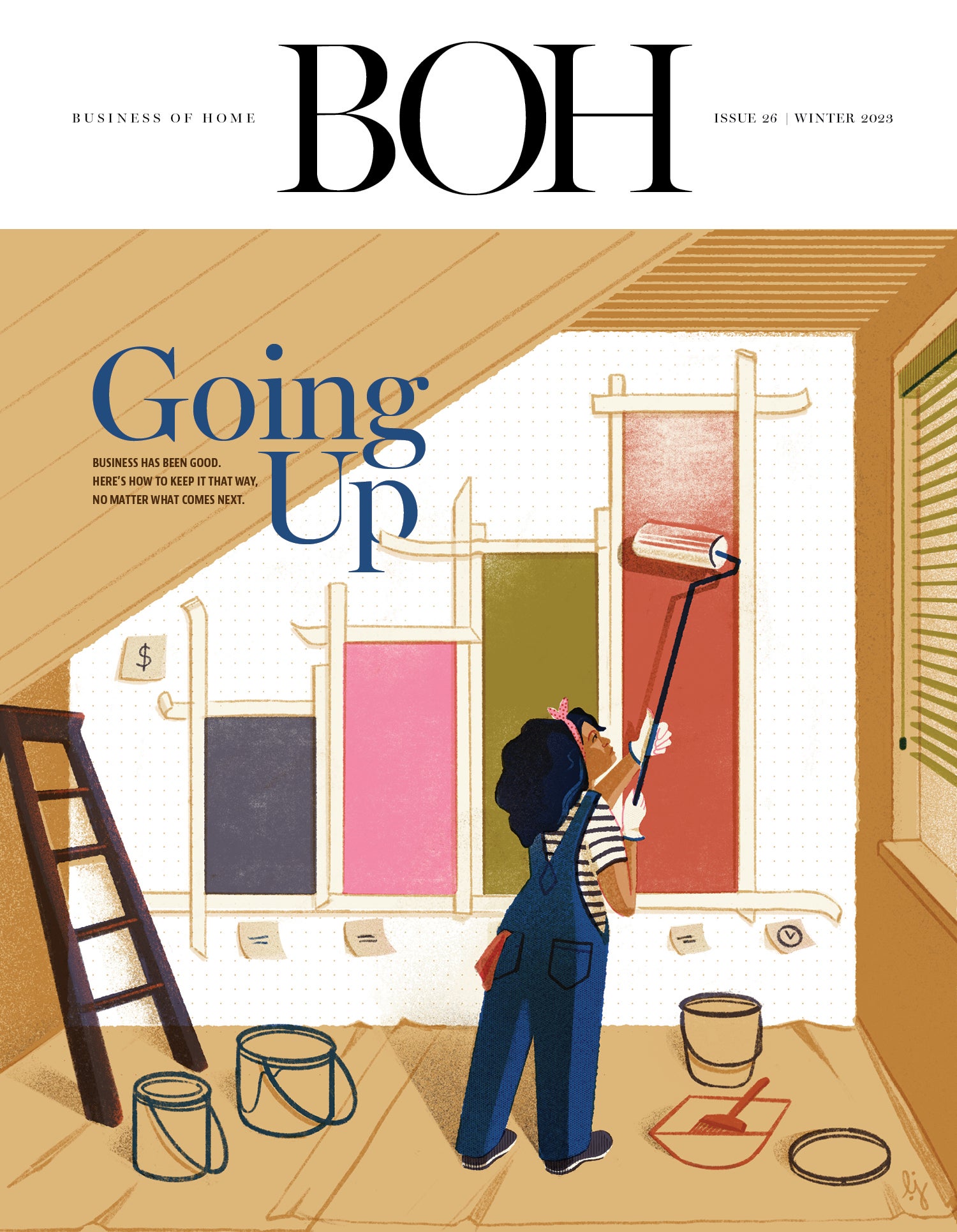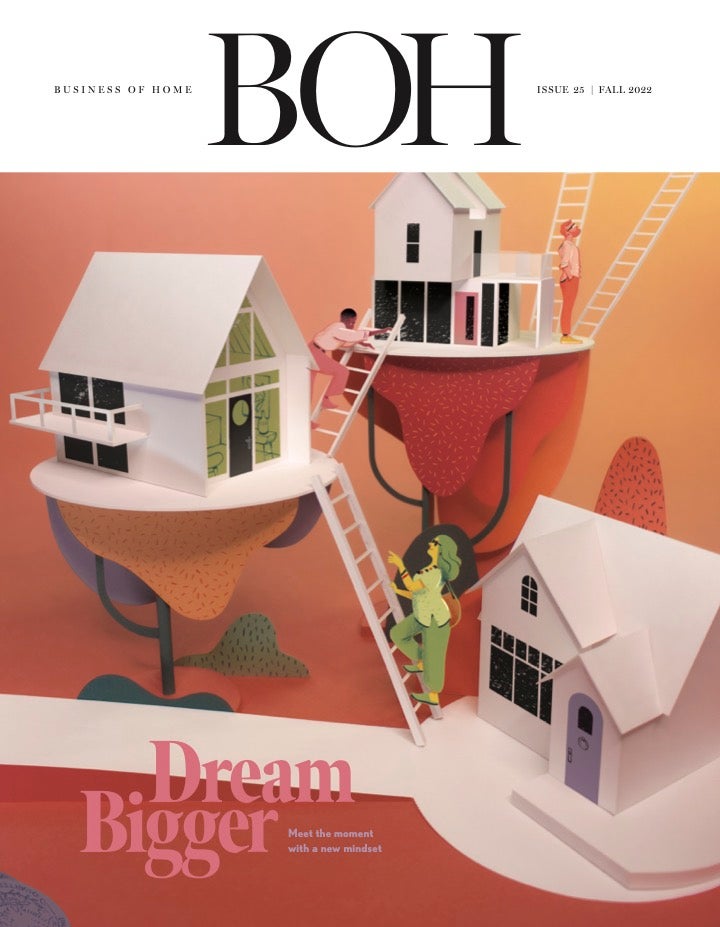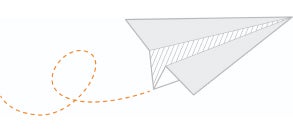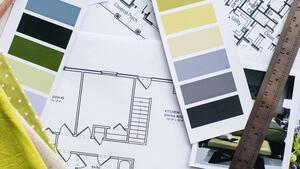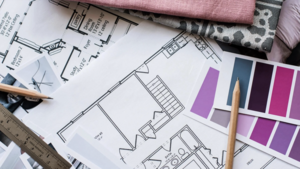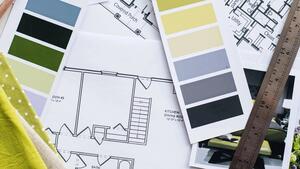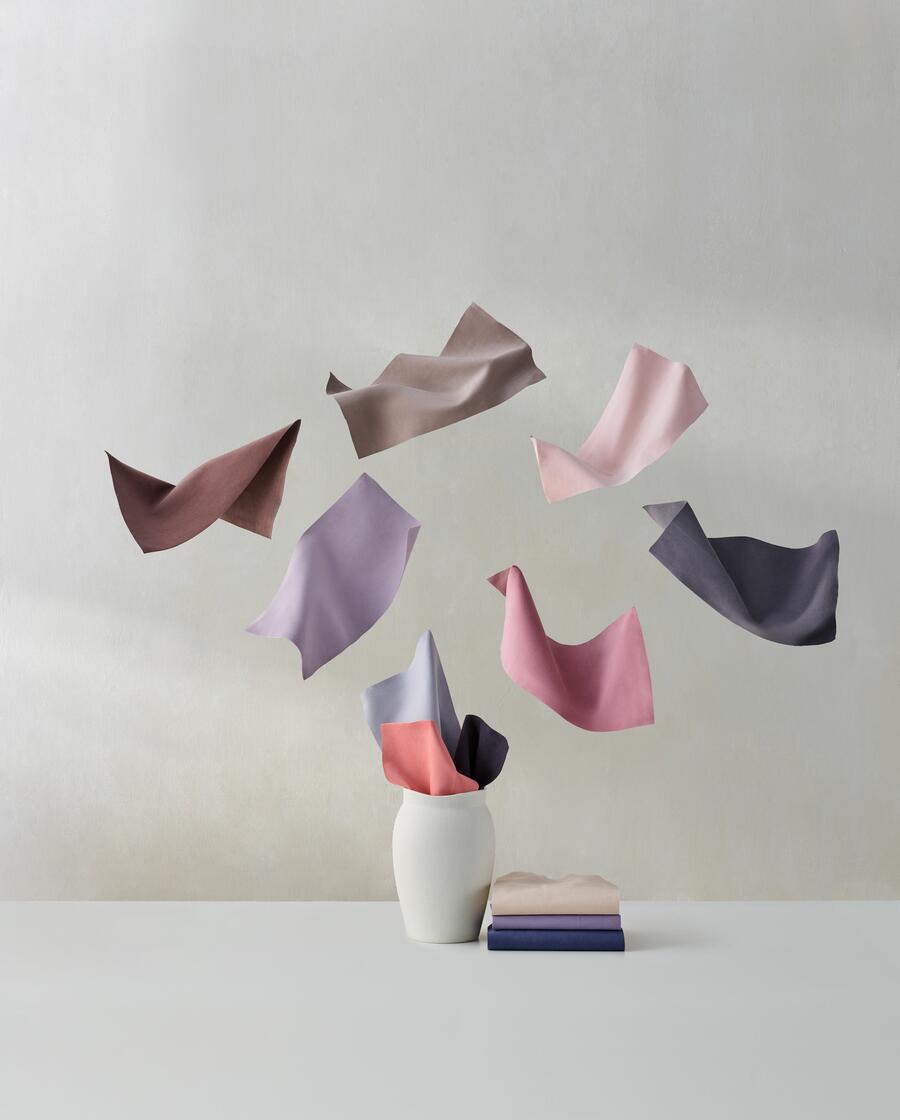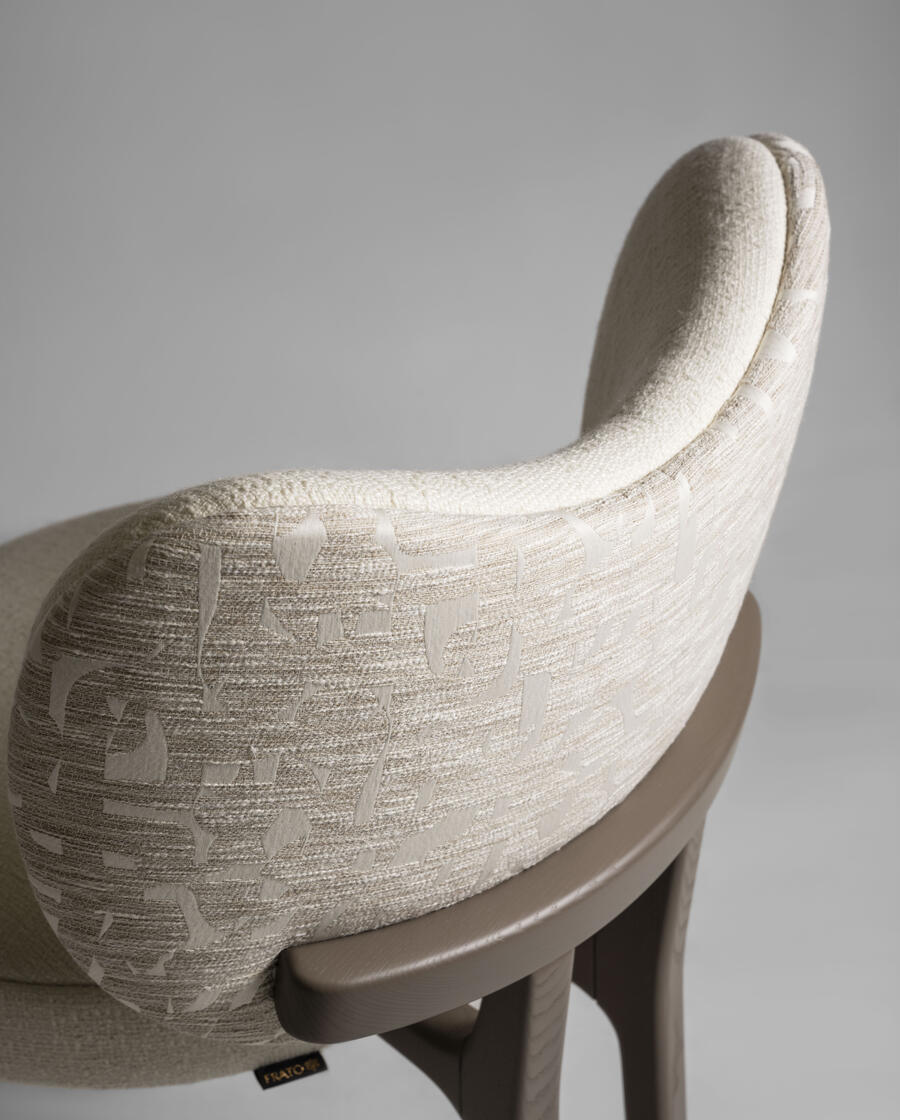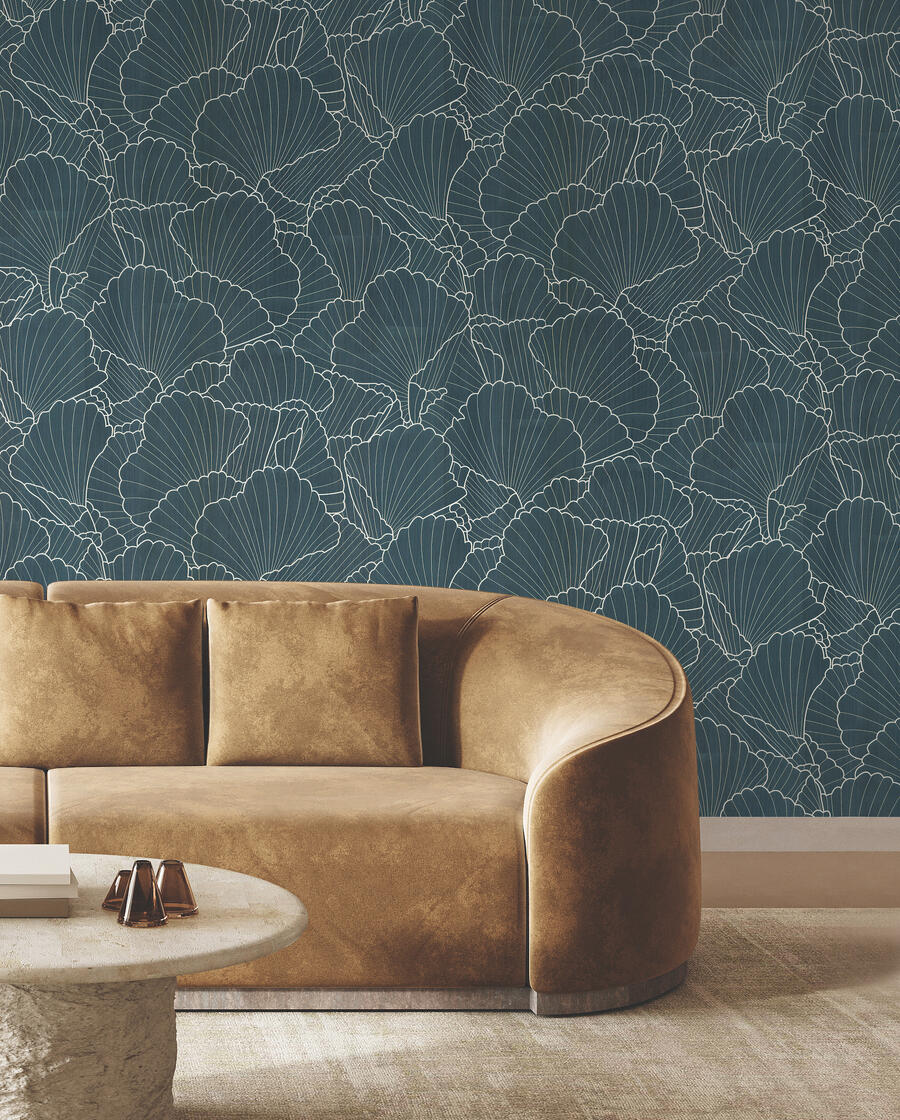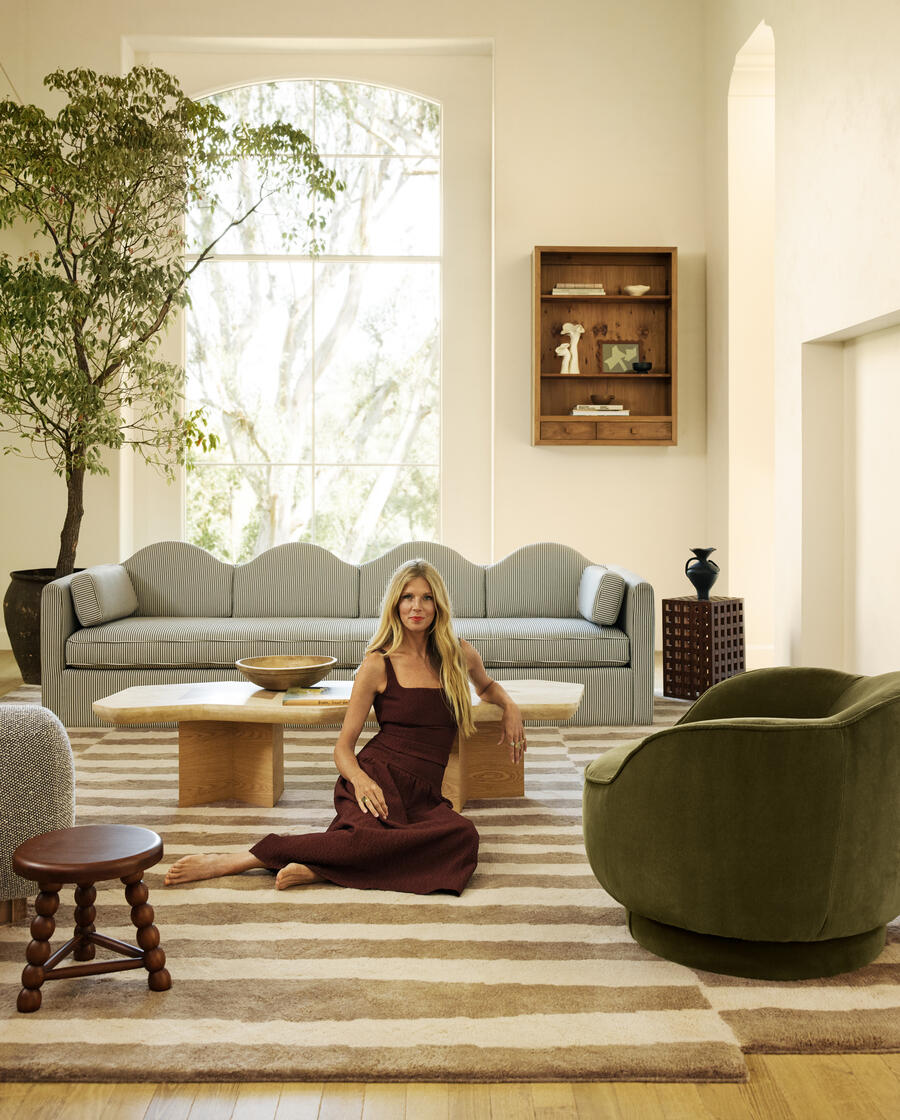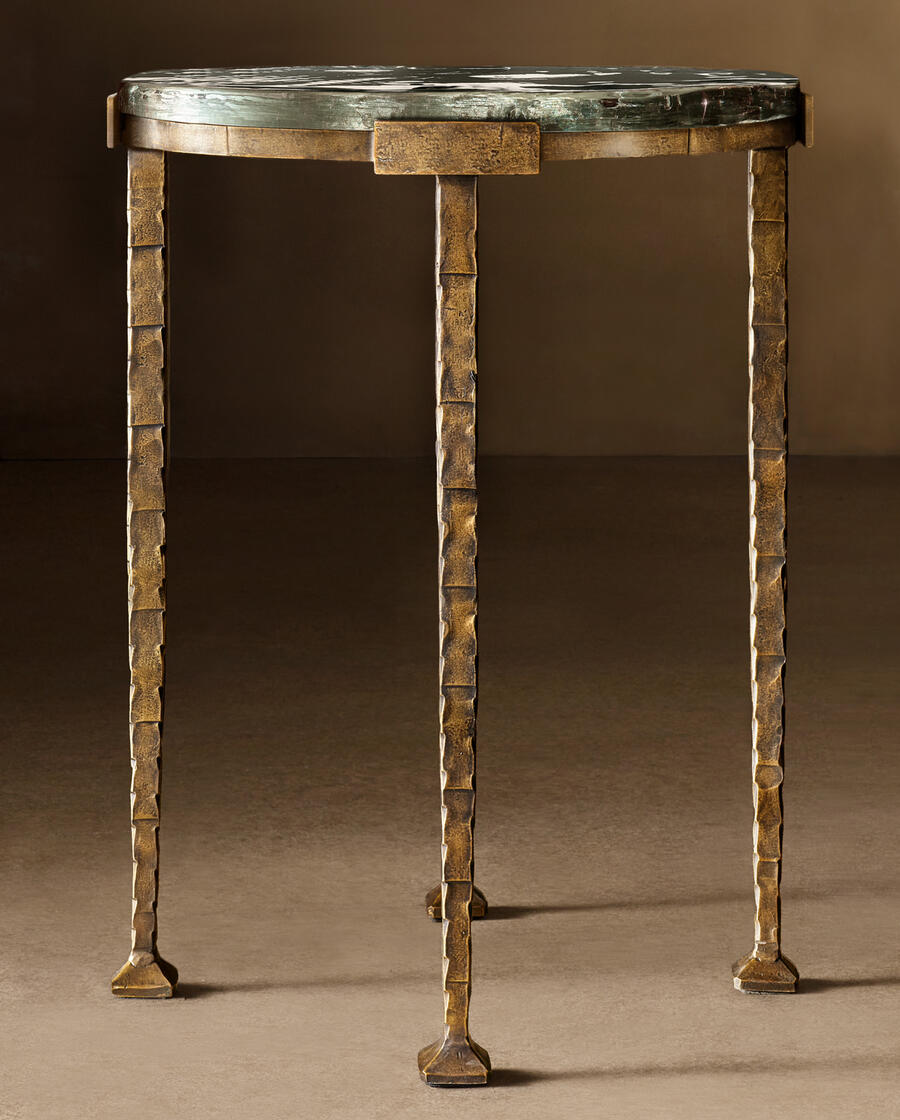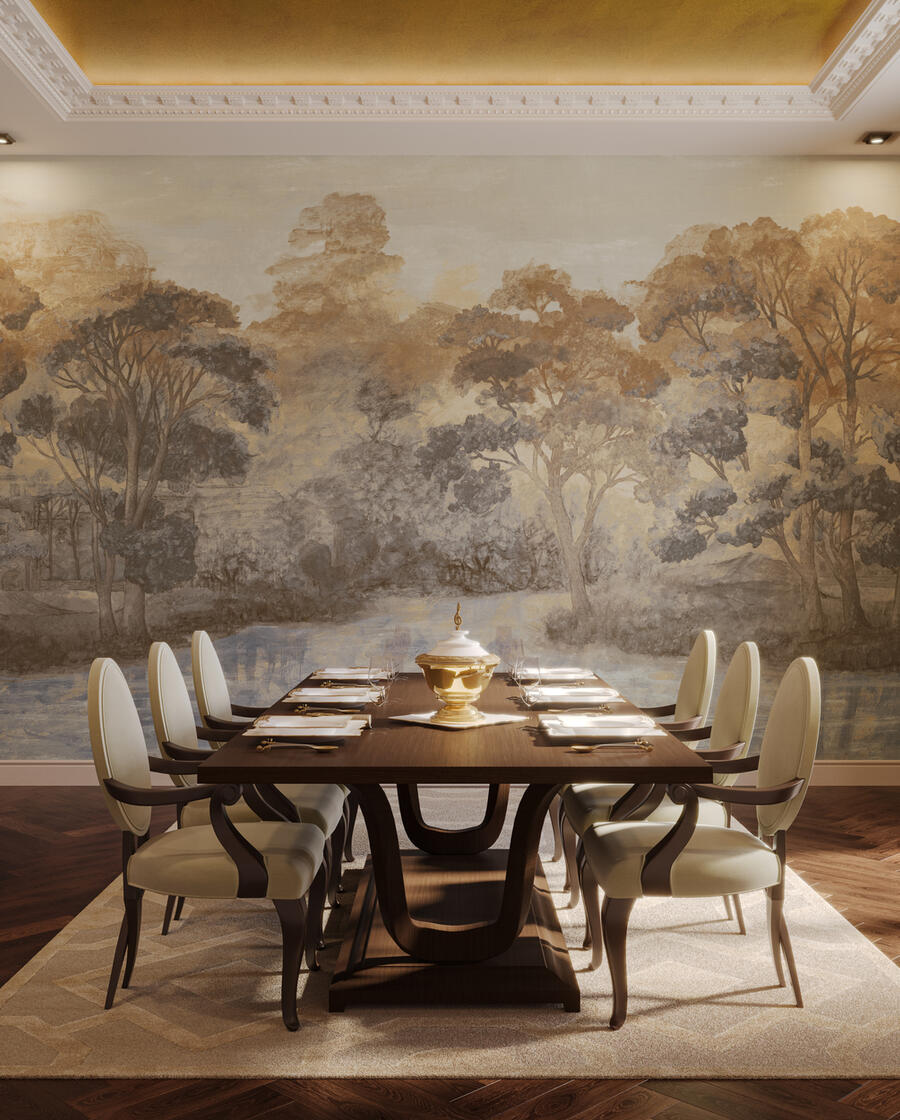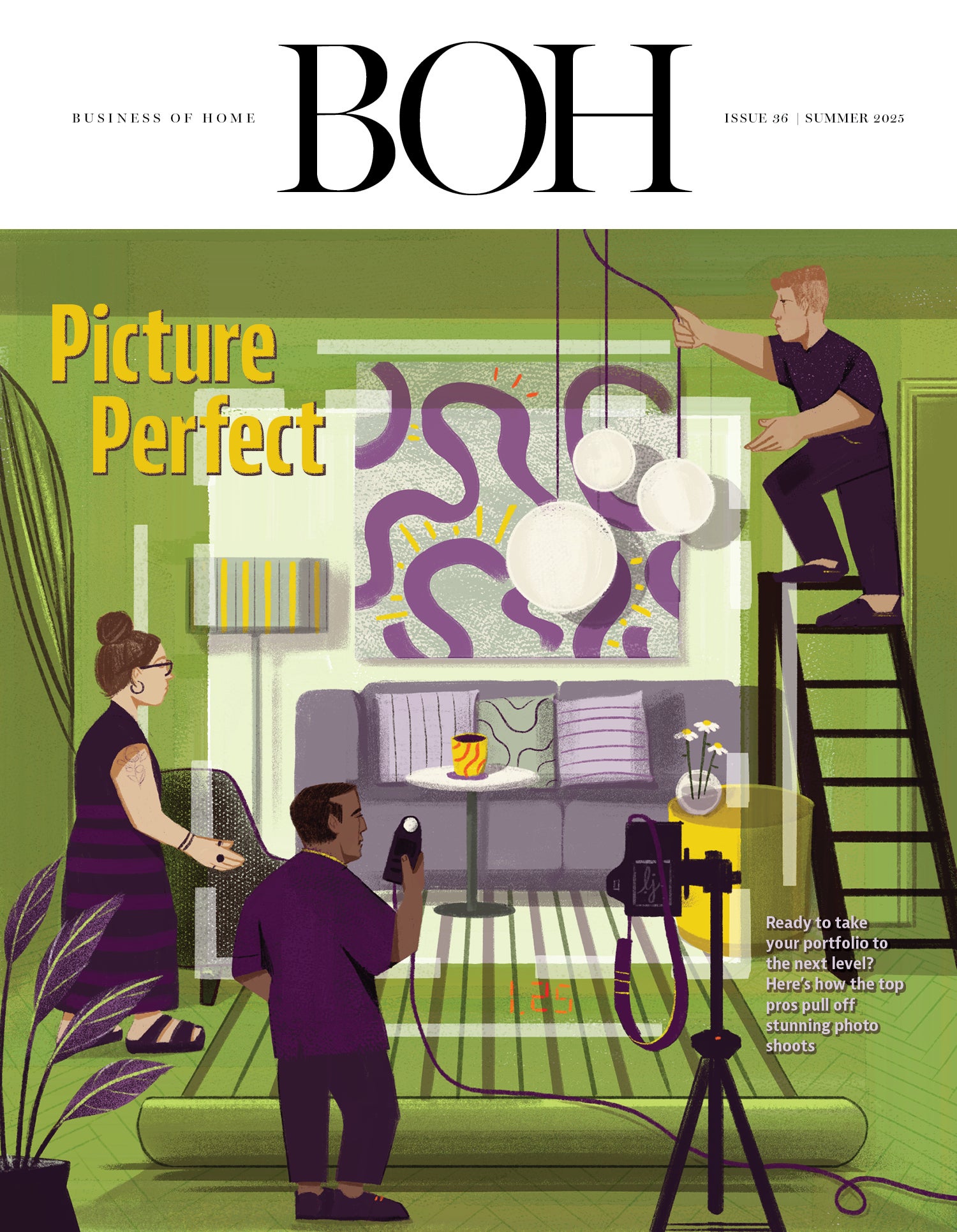Creative business coach Sean Low has been fielding designer questions for Business of Home since 2018. The industry has changed a lot since then—and so has Low’s industry-leading advice. With that in mind, he’s revisiting some of his early columns with fresh eyes, including one on how to let go of an employee you’ve outgrown. Here’s his take today.
Dear Sean,
I have been a designer for over 10 years and currently have a team of three aside from myself. I have had an increasingly difficult time with my longest-tenured employee (she has been with me for more than seven years). Our clientele has grown, as has our approach. I no longer need her to be the ultimate team player as much as I need her to be the amazing conceptual designer and renderer that she is. She is not adapting to the evolving dynamic and does not communicate well with the other members of my team. After grappling with this for a while, I’ve realized I need to let her go, but I do not know how. Help!
Gun-Shy
Dear Gun-Shy,
In the seven years since I first wrote this column, the changes and demands of designers have evolved to the point where having a team of specialists—employees or freelance—is almost expected.
Consider interior architecture. In 2018, many of the software solutions that are essential today were still in the early stages of adoption by interior designers. But a lot has changed: In many cases, interior designers are now responsible for (and well-versed in) interior architecture and decor—and are often the only professionals involved in a project who see everything all at once. They are overseeing how the stage interacts with the set, and vice versa. As many have found, the ability to define the stage (for example, through interior architecture) exponentially increases the likelihood of success by the time a project is ready for furnishings.
Designers will be increasingly left behind without access to an employee who can define interior architecture, or who is knowledgeable enough to supervise those who can. It means the usual metric of the factory—and the workhorse—is going the way of the dinosaur.
We all grew up on the factory model: Buy low, sell high. It emphasizes paying as little as you can and trying to charge the most. For employees, that used to mean that success was measured by how much you could do, in the shortest period of time. Today’s design firm, however, has blown up this metric and replaced it with a new one: How much time is necessary to do the firm’s best work? Considered and professional thought matters far more than just getting it done—especially now, in an increasingly AI-centric world, where the machine can do the rest. In that framework, every employee must be an entrepreneur in order to be indispensable and successful.
To me, an entrepreneur is someone who believes passionately in their vision and approach. In other words, every employee must own their voice and be willing to stake their job on what they provide to the client, vendors or other members of the team. They have to believe in what they think and fight for it. Of course, there is no guarantee the thought will be enacted—ultimately, only the designer with her name on the door gets to call the ball—but owning your voice is about the process, not the result.
Today, there is no longer room for a team of workhorses—quite possibly, that role in a design firm is almost over. Clients want to be moved and transformed, and they see designers as the professionals that can make that happen for them. The days of selling a discount and being a means to an end are closing, if not already gone. And frankly, thank goodness.
In its place are firms that make promises and keep them. Every minute of every day. It is not about delivering the floor plan on Tuesday if doing it right means delivering it on Friday. It is about knowing that the floor plan is worth fighting for when the client gets it on Friday. If AI can provide most everything instantly, an employee who provides something that’s not much better than ordinary sooner than expected does not matter. Instead, build teams that believe in the culture you establish such that promises are kept and defended.
Cue the three Ws: Where were you? Where are you? Where are you going? It used to be that only the firm principal was responsible for communicating these, or at least being the backstop for them. Today, every employee is responsible for their version at their moment with clients, vendors and co-workers. This is the undoing of the factory: forthright effort, not maximum effort; powerful engagement, not volume of tasks; considered and contemplated, not merely completed. Always.
It sounds like the tenured employee in question has skills that could potentially prove valuable to this model, but she’s caught up in an old way of doing things. If your leadership and guidance has failed to sink in and prompt a shift in her focus and performance—and if she is proving a distraction or an obstacle in the face of the firm’s upward trajectory—then it is time for both parties to move on with grace and without apology.
Entrepreneurship, emotional intelligence and professionalism in all aspects of a design firm is what matters today and most certainly tomorrow. Diligence beyond function means all workhorses must evolve, and your job as the designer is to set this new approach as the paragon.



